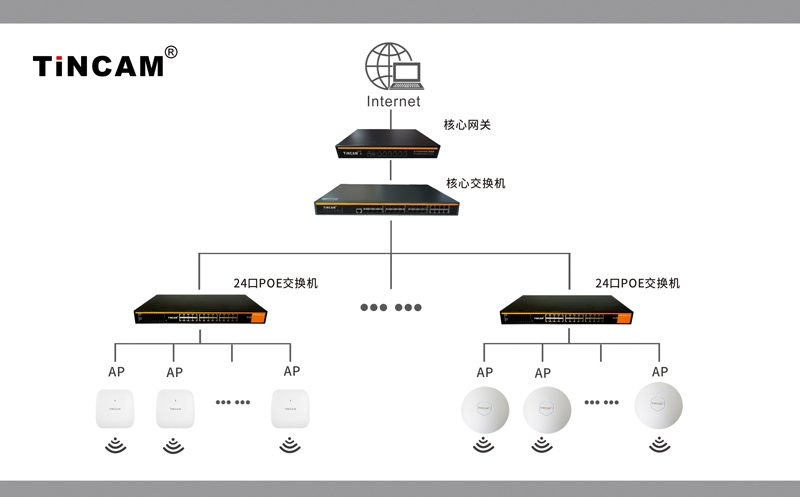Which band of 2.4G and 5.8G is good for wireless AP?
A wireless AP is a wireless access device that can be used to form a wireless network. It is used a lot in commercial environments. Currently, there are two bands of wireless APs on the market, 2.4G and 5.8G. Many people don't know the difference between them, wondering which one is better?
Wireless AP-2.4G
The 2.4 G WIFI signal has a slightly longer wavelength, so it can cover many products in the presence of multiple walls to ensure a certain signal strength. But wireless data transmission depends on channel support in addition to good or bad signals. The 2.4G congenitally defective channel division has been criticized. At present, the large-scale use of wireless broadband cats by access providers such as telecommunications has also made the 2.4G channels that are not affluent even more crowded.
What is even more depressing is that the 2.4G band is not the only WIFI family, peripherals such as cordless phones, wireless keyboards and mice, and even microwave ovens have to come together. Therefore, it is inevitable to encounter poor WIFI performance and stability every day.
Wireless AP-5.8G
5.8G frequency is higher than 2.4G, which can provide data transmission bandwidth several times higher than 2.4G frequency band, but the short wavelength results in far less penetration than 2.4G, so it will be more difficult to rely on 5.8G for a single transmission point for coverage. And the cost is higher than the 2.4G frequency band equipment, the current use is not large, so fortunately, the 5.8G frequency band rarely occupies the channel.
As for the wireless AP device in which frequency band is used, it can be considered in combination with its own needs and the environment of wireless coverage.
If the home WIFI only provides basic Internet access services for mobile devices, browsing the web, swiping WeChat, and so on, the single transmission point 2.4G is slow, but it is basically enough for 100 units.
If wireless devices need higher bandwidth support, for example, mobile devices need to play media files in NAS, or are equipped with TV boxes, and game consoles do not want to connect network cables, then AP coverage may be required in key rooms.

Feel free to share your personal opinion: Generally, a small area with a small access density can use a 2.4G wireless AP, and for places that require high, high-density access, use a 5.8G wireless AP as much as possible. In fact, in many WIFI projects, 2.4G AP and 5.8G AP are used together. Shenzhen Tianbo's wireless APs have 2.4G and 5.8G, as well as wall-mounted and ceiling-mounted, with good stability and flexible networking applications.
Finally, it is explained that during the setting process of the wireless AP, pay attention to the choice of channels. There can be only three channels of 1, 6, and 11 without any intersection. Generally, the default channels of WIFI devices are all three. Also, try to place the wireless AP in the center of the flat space, and try not to lean on the wall and metal objects.
WEIHAI SUNSHINE YACHTS CO.,LTD , https://www.ssboats.cn